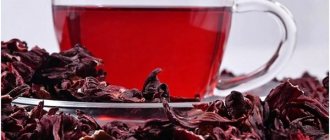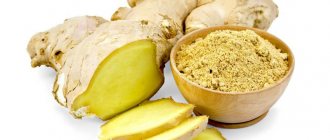28.10.2018
A.A.
(Last update: 10/05/2021)
There are contraindications. Specialist consultation required
Hypertension is quite insidious, and it is necessary to treat it comprehensively to achieve the best result. In addition to medical therapy, you need to properly organize your diet and choose only those foods that will have a positive effect on the body. So, your diet should definitely include sauerkraut.
The benefits of sauerkraut
According to generally accepted opinion, sauerkraut is a popular product on our table. But, nevertheless, cabbage was fermented in ancient times in China and Korea. This is explained by the fact that this product has a very rich and valuable composition.
Proponents of a healthy diet consider sauerkraut a valuable source of vitamin C, which is a catalyst in many metabolic processes in our body, and also has a beneficial effect on the immune system.
Do not self-medicate. Consult a specialist:
This product contains:
- Fat-soluble vitamins;
- Beneficial bacteria;
- B vitamins;
- Minerals.
Vitamin U is especially valuable, as it helps restore the mucous membrane in the stomach. Also, while taking sauerkraut, digestion is significantly improved and the balance of microflora in the intestines is normalized.
Sauerkraut can be taken by people suffering from diabetes, since it does not have a significant effect on blood sugar levels.
Chemical composition and calorie content
Preparing sauerkraut involves salting it with a further fermentation process, which results in the formation of lactic and acetic acids and softening of the fiber.
Did you know? The dish was invented in China, originally cabbage was fermented in sour rice wine. This salad was part of the diet of the Chinese who participated in the construction of the Great Wall of China.
In addition to useful acids, the product contains large quantities of the basic and most necessary vitamins for the body: A, B, C (cabbage contains more vitamin C than the same amount of lemon). In addition, during the fermentation process, the salad is enriched with macro- and microelements such as potassium, magnesium, phosphorus, sodium, chlorine, aluminum, boron, iron, iodine.
Sauerkraut is a low-calorie product; 100 grams of the product contains only 26 kcal, which is less than 2% of the average daily human requirement
Sauerkraut and pressure
This valuable product has numerous beneficial properties, so it will also be useful for hypertensive patients. The high content of nutrients in cabbage will help cope with some chronic processes and give vitality. This effect is also ensured due to the fact that against the background of good digestion, vitamins and minerals are much better absorbed.
Cabbage juice helps lower blood pressure. The hypotensive effect is achieved due to the fact that the active components of cabbage help reduce the amount of cholesterol in the blood. This also ensures better nutrition of the heart muscle. Some doctors recommend drinking juice to prevent atherosclerosis.
In this case, the fact how the cabbage was originally prepared is of great importance. This will determine how much nutrients will be retained and, accordingly, whether there will be any benefit. To increase the vitamin content of white cabbage, you can add carrots, apples, and cranberries.
Nutritionists also recommend cabbage as a source of fiber. It is especially valuable for cleansing the intestines of waste and toxins. As you know, they, in turn, can seriously clog the blood. This also reduces overall inflammation in tissues and improves metabolism.
How does sauerkraut affect blood pressure and does it affect it at all?
Sauerkraut contains a large number of components that can directly or indirectly affect blood pressure. So, one of its main components is plant fiber. It promotes the retention of cholesterol and other lipids in the intestines, so that they do not enter the blood.
In addition, it contains large amounts of vitamin C (or ascorbic acid). This substance not only stimulates the immune system, but also helps strengthen the vascular wall, which is of great importance in atherosclerosis.
Another component, choline (vitamin B4) plays an active role in lipid metabolism. It lowers the concentration of cholesterol and transport lipoproteins.
Another advantage is the low calorie content of the product - per 100 grams it contains only about 30 kilocalories. This helps prevent obesity, diabetes and cardiovascular pathologies.
However, all these substances cannot directly change blood pressure and are not able to lower it. They only influence the risk factors that lead to the development of hypertension.
At the same time, sauerkraut contains a component in very high concentrations that can directly increase blood pressure. This is ordinary table salt (NaCl), which acts as follows:
- High sodium levels cause increased secretion of the hormone vasopressin;
- Vasopressin (or antidiuretic hormone) leads to vasospasm - which, of course, increases blood pressure;
- This hormone also leads to a decrease in the excretion of fluid in the urine. As a result, the volume of circulating blood increases, and, as a result, blood pressure increases.
Sauerkraut increases or decreases blood pressure
Many people want to know for sure whether there is a risk from consuming sauerkraut if they are prone to hypertensive crises. In fact, the rich composition will only improve your well-being, increase the elasticity of blood vessels and even calm the nervous system due to the large amount of magnesium contained in the juice. This mineral reduces the risk of myocardial infarction, helps cope with insomnia and improves kidney excretory function.
The vitamins in white cabbage and its juice also have a beneficial effect on blood circulation, vascular nutrition and cellular metabolism. Without this, normal functioning of the heart and other organs is impossible. Against this background, a diuretic and cardioprotective effect is also provided.
White cabbage helps dissolve and remove bile acids from the body. When in excess, they negatively affect the nervous system, causing hyperexcitability. Also, daily inclusion of sauerkraut in the diet will be an excellent prevention of coronary heart disease and atherosclerosis.
Adding sauerkraut to various dishes can also significantly reduce the risk of developing cancer. Thus, according to studies conducted in laboratory conditions, the growth of cancer cells was suppressed in hamsters fed cabbage.
But any cabbage, even stewed and boiled, will be useful in the diet. The main thing is that there is no excess salt in the finished dish. The latter contributes to fluid retention in the body and puts a heavy burden on the kidneys. This organ, as is known, is already overloaded with arterial hypertension.
It is advisable to prepare fresh salads without adding any salt. It is advisable for hypertensive patients to eat as many fresh vegetables and fruits as possible. These products enrich the body with nutrients, improve the functioning of the gastrointestinal tract, and create a slight diuretic effect, thereby reducing blood pressure.
Benefits and harms
Sauerkraut is a tasty and very valuable dish, rich in vitamins. Very often this product is recommended for use in a healthy diet.
The dish has the following beneficial properties:
- Regular consumption of sauerkraut eliminates the occurrence of vitamin deficiency;
- this product helps to enhance metabolic processes, which will help get rid of extra pounds;
- has a beneficial effect on the heart and blood vessels, however, with high blood pressure, the conditions for its consumption should be observed (they will be discussed separately).
This dish is contraindicated in case of exacerbation of gastrointestinal diseases, pancreatitis and cholecystitis. In addition, hypotensive patients whose systolic pressure is less than 80 millimeters of mercury should also avoid this product.
When should you not eat sauerkraut if you have hypertension?
There are a number of diseases for which it is undesirable and completely contraindicated to eat sauerkraut. This is due to the fact that it contains a large amount of lactic acid. So, with some metabolic diseases, it can accumulate in the body and cause joint diseases, as well as muscle weakness.
Those who have a history of thyroid disease and urolithiasis should not include sauerkraut in their daily diet. In addition, sauerkraut can worsen kidney failure. If gastritis occurs in an acute period, then you should also avoid eating cabbage.
Possible harm to vegetables
Like any other product, sauerkraut can be not only healthy, but also harmful. For example, doctors do not recommend getting carried away with its use by people with gastritis or high acidity.
When asked by patients whether cabbage increases or decreases blood pressure, doctors do not always give a definite answer. It all depends on the method of preparing the vegetable. If the chopped leaves were placed in a container for fermentation and sprinkled with salt, then such a product is undesirable in the diet of people with pathologies of the heart and blood vessels.
Salted cabbage has a negative effect on pathologies of the urinary system. Snacks are prohibited for patients with chronic pyelonephritis and urolithiasis. In case of gout, its use may cause an exacerbation.
Recipes for cooking cabbage to lower blood pressure
In order for food to be only beneficial, you need to treat the cooking process itself correctly. There are a large number of dishes that include cabbage, both pickled and fresh white cabbage.
Summer borscht
Summer borscht is very popular on our table. In addition to cabbage, you will need a large number of vegetables and other products to prepare it.
For borscht you need:
- Flour (lightly toasted);
- Butter or vegetable oil (can be combined);
- Sour cream;
- Potato;
- Boiled beans;
- Tomato juice or paste;
- Greens (dill, parsley);
- Spices (black pepper, bay leaf, celery, garlic);
- Carrot;
- Bulb onions;
- Bell pepper;
- Beet.
For the vegetable broth, boil potatoes cut into slices with carrots and onions. You can add boiled beans. At the end of cooking, add sweet peppers and cabbage, cut into strips. To make the borscht tasty, you must fry it in a frying pan. Simmer chopped root vegetables (onions, carrots, beets, celery) in oil. To make the borscht rich, you can add a tablespoon of wheat flour fried in a dry frying pan. At the end, add tomato paste or juice, boil and pour the contents of the frying pan into the pan. For a more pronounced aroma, you can add chopped garlic and herbs “under the lid”. Let it brew for at least half an hour. When serving, top with sour cream.
Sauerkraut
Sauerkraut is also suitable for many dishes and as a main product. To prepare a proven recipe, take 3 kg of white cabbage and one large carrot. You will also definitely need spices (bay leaf and black peppercorns); many people prefer to add cranberries or sour apples to the recipe.
When choosing cabbage, it should be quite dense, this will indicate its freshness, as well as juiciness. It is first cleaned of bad leaves and washed well. Then they chop into small strips; the carrots must be grated on a coarse grater.
The resulting crushed mass is mixed well, salt is added at the rate of 1 tablespoon per 1 kg of cabbage. Next, the cabbage is left in a glass or ceramic container for several days so that it releases its juice. It must be compacted very tightly in the jar; it is also good to use pressure. Periodically, the kaputa must be pierced with a wooden stick to ensure uniform fermentation.
The temperature for fermentation should be room temperature. On average, the product will be ready for consumption after three days, when the release of carbon dioxide is felt. Sauerkraut can be added to salads, vinaigrettes and cabbage soup, and used as a filling for pies and dumplings.
Meat with vegetables
Very tasty and healthy recipes are those that combine meat with vegetables. Hypertensive patients should choose low-fat and easily digestible varieties, such as beef.
The piece of meat must be washed well and then cut, after which it is placed in a pan for stewing. Vegetables such as cabbage, carrots, zucchini and rutabaga are cut separately. It is advisable to boil the potatoes separately so that other vegetables do not have to simmer for a long time. Meat and vegetables are served on the table, previously poured with sour cream and sprinkled with herbs.
Nutrition for pregnant women
Rational nutrition is one of the main conditions for a favorable course and outcome of pregnancy and normal fetal development.
A pregnant woman's diet should be complete, that is, it should contain a sufficient amount of proteins, fats, carbohydrates, vitamins and microelements. To replenish vitamin deficiency, berries, vegetables and fruits with pulp are very useful. You should not get carried away with citrus fruits, as they can provoke allergies in the mother and unborn child.
It is useful to eat black bread, bread with bran, etc. Cereals: buckwheat, rice, oatmeal, containing a lot of fiber, promote efficient intestinal function and prevent constipation, being the basis of proper nutrition for pregnant women.
Very often, during pregnancy, the mother experiences varying degrees of iron deficiency. Many even develop physiological anemia, which goes away after childbirth, but not all. To prevent anemia, it is useful to eat beef or veal liver, red meat, and bone marrow. Green apples are also useful, as in addition to iron they also contain vitamin C, in combination with which iron is absorbed much better.
Proper nutrition for pregnant women implies adequate compensation for the deficiency of proteins and other substances through high-quality food with an optimal ratio of the main components, frequent, divided meals, and the use of special vitamin complexes.
Body weight gain during pregnancy for women with normal weight should be 11.5 kg, for women with underweight 12.5 kg, for overweight women 10.5 kg.
Diet of a pregnant woman.
- hearty breakfast
- light second breakfast,
- hearty lunch
- less filling dinner
- 2 hours before bedtime, a glass of yogurt or kefir.
During the day, a pregnant woman needs to properly distribute the meals and products she eats. Meat, fish, eggs should be eaten in the first half of the day for breakfast and lunch, and dairy and vegetable products in the afternoon for afternoon snack and dinner.
Sample weekly menu for women in the second half of pregnancy
Monday:
First breakfast:
goulash with mashed potatoes, apple juice.
Second breakfast:
milk.
Lunch:
pea soup with minced meat, boiled fish with vegetable stew, compote.
Afternoon snack:
fruits or berries.
Dinner:
cottage cheese soufflé, cranberry mousse.
21h:
kefir.
Tuesday:
First breakfast:
curd soufflé, boiled egg, vinaigrette, rosehip infusion.
Second breakfast:
milk, bun.
Lunch:
borscht with minced meat and sour cream, boiled chicken with vermicelli, cranberry mousse.
Afternoon snack:
a glass of rosehip infusion, a bun.
Dinner:
low-fat cottage cheese.
21 hours:
kefir.
Wednesday:
First breakfast:
boiled fish with mashed potatoes, low-fat cottage cheese, milk.
Second breakfast:
protein omelet with sour cream, fruit juice.
Lunch:
pureed vegetable soup with sour cream, boiled tongue with oatmeal, fruits, berries.
Afternoon snack:
rosehip infusion, bun.
Dinner:
low-fat cottage cheese.
21 hours:
kefir.
Thursday:
First breakfast:
boiled fish with vegetable stew, low-fat cottage cheese, coffee with milk.
Second breakfast:
milk, bun.
Lunch:
rice soup with minced meat, boiled chicken with mashed potatoes, fruit.
Afternoon snack:
low-fat cottage cheese, cranberry mousse.
Dinner:
protein omelet with sour cream, tea.
21 hours:
kefir.
Friday:
First breakfast:
omelet with sour cream, fresh cabbage salad, coffee with milk.
Second breakfast:
milk, bun, low-fat cottage cheese.
Lunch:
potato fish soup, sausages with buckwheat porridge and salad, fruit jelly.
Afternoon snack:
fruits or berries, cookies.
Dinner:
low-fat cottage cheese, rosehip infusion.
21 hours:
kefir.
Saturday:
First breakfast:
boiled fish with mashed potatoes, milk.
Second breakfast:
herring with onions, vinaigrette, cranberry mousse.
Lunch:
pea soup with minced meat, boiled beef with carrot puree, compote.
Afternoon snack:
cookies, rosehip infusion.
Dinner:
protein omelet with sour cream, tea.
21 hours:
kefir.
Sunday:
Lunch:
wheat milk porridge.
Lunch:
fish soup, goulash with buckwheat porridge and salad, compote.
Afternoon snack:
cookies, cranberry mousse.
Dinner:
low-fat cottage cheese, tea.
21 hours:
kefir.
Remember!
- Sit down at the table, rested and in a good mood. It is necessary to chew food slowly and thoroughly.
- Prefer to eat fresh natural products that have undergone gentle culinary processing (boil and stew). Vitamins and microelements are preserved as much as possible in boiled and stewed food.
- Avoid foods that are too hot or too cold. The optimal food temperature is -37 degrees.
- Choose vegetables and fruits over high-calorie snacks. Limit your intake of sweets and salt.
- Avoid eating pickled, fried, smoked foods, rich desserts, strong meat broths, and products containing artificial preservatives, colors and flavors.
- Eliminate alcoholic drinks and carbonated drinks from your diet.
- Tea and coffee are drinks that are not recommended to drink during pregnancy. If a pregnant woman really wants tea or coffee, then you can drink either decaffeinated coffee or mild herbal and fruit teas.
Diet for edema and pathological weight gain.
Preeclampsia
is a late toxicosis of pregnant women, leading to serious consequences for the mother and child. Preeclampsia is manifested by a classic triad of symptoms: edema, proteinuria (protein in the urine), increased blood pressure.
Factors for the development of gestosis:
- Age (under 18 and over 30 years old);
- Pregnancy with more than one fetus;
- Heredity (women whose mothers suffered from gestosis);
- First pregnancy;
- Preeclampsia in previous pregnancies;
- The presence of extragenital pathology (obesity, arterial hypertension, renal and hepatic pathology, etc.).
Preeclampsia usually occurs after 34 weeks of pregnancy. If late toxicosis appears earlier than this period, starting from 20 weeks, it is more severe.
To prevent gestosis, the following measures are taken:
- organization of daily routine and proper nutrition;
- regular but moderate physical activity;
- frequent exposure to the open air;
- limiting salt intake;
- observation by an obstetrician-gynecologist throughout pregnancy;
- treatment, correction of chronic pathologies;
- rejection of bad habits.
When treating gestosis, measures are taken to normalize the activity of the nervous system, blood composition and circulation, improve metabolic processes, treat the walls of blood vessels, normalize blood pressure and water-salt balance.
It should be noted that it is impossible to relieve swelling with diuretics. This is due to the fact that essential mineral elements are removed along with urine.
For treatment to be effective, it is necessary to adhere to a regimen of rest, physical activity and nutrition.
Nutrition during gestosis plays a special role. The diet should be balanced with the obligatory presence of eggs, meat, and dairy products. You should not limit your water consumption, because... with its deficiency, the blood may be more viscous and thick. For normal water metabolism, you need to drink about 1.5 liters of fluid per day.
In the diet for gestosis, you should not greatly limit the consumption of salt, because this can also affect water-salt metabolism. You can consume approximately 5-8 grams of salt in foods during the day.
If there are certain indications, in the second trimester of pregnancy the doctor may advise the woman to have fasting days once a week.
Examples of fasting days during pregnancy.
Fruit day.
During the current day, you can eat about 1.5-2 kg of apples, as a salad or baked in the oven. You can add a couple of drops of olive oil and lemon juice to the apple salad. When baking, apples can be sprinkled with cinnamon.
Apples can be replaced with watermelon or any other fruit, depending on your taste preferences. Grapes, bananas and peaches are not suitable for these purposes.
Vegetable day.
During the day, you need to consume 1.5 kg of vegetables such as pumpkin or zucchini, dividing the entire amount of food into 5 equal meals. These vegetables enhance intestinal motility and help remove excess fluid from the body.
Protein day.
During the day, you need to consume 500 grams of lean meat (veal, chicken) or fish, boiled before use, without adding salt. Divide food into 5 meals. It is acceptable to consume 1 liter of low-fat kefir on this day.
Fermented milk day.
During the whole day, it is permissible to consume any fermented milk drink (kefir, fermented baked milk) in an amount of no more than 1.5 liters, as well as 600 grams of low-fat cottage cheese. Food must be divided into 6 meals.
Buckwheat day.
Boil 1 cup of buckwheat without adding salt and eat throughout the day with milk or kefir, up to 1.5 liters.
A fasting day during pregnancy gives good results, provided that all the rules for its implementation are followed.
But the same results can be achieved if you simply remove useless carbohydrates from your diet - baked goods and sweets, large quantities of pasta, carbonated drinks, sugar.
Obstetrician-gynecologist at antenatal clinic No. 14 Blinova A.F.
Tags: pregnancy
Prevention of hypertension
As already mentioned, nutrition is of great importance in the treatment of any disease. Hypertensive patients should choose only high-quality, lean and healthy products. Your daily diet should include a large amount of fruits and vegetables, but you should avoid eating saturated fats, smoked foods and sugar.
Full physical activity plays an important role in the treatment of hypertension. If you pay attention to sports such as running (vigorous walking), cycling and swimming, your overall well-being will significantly improve. Such exercises will help speed up general blood circulation and metabolic processes. It is also important not to forget about a proper drinking regime.
Drug therapy for hypertension is the most important and key point. When the first signs appear, you should definitely seek medical help. We must also not forget that many neglected chronic processes can trigger the onset of arterial hypertension.
Many hypertensive patients wonder whether it is possible to eat sauerkraut with hypertension. After all, this product is always present on our table and is very popular. Sauerkraut will be useful for hypertension; the main thing when preparing it is to follow your salt allowance and know in moderation in everything.











